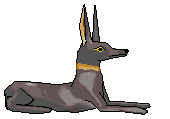EXPRESS UK: Egypt mystery SOLVED? Expert reveals ‘real reason’ pharaohs built false doors in tombs
- Curtis Ryan Woodside

- Jul 15, 2019
- 3 min read
Recently Express Newspapers UK have written an article about myself and my 4 part Amazon Prime Series "Egypt Thru The Ages" and the online link to the article features an extract from the series where we discuss "False Doors."
Now, Although I am very flattered by the exposure, some of the facts are not fully correct. But over looking that it is a great article and is wonderful that Egyptology is becoming more popular. I would actually love to sit down with Callum Hoar from EXPRESS to have an interview with my side of the story, such as the fact that I am not looking for the tomb of Imhotep, mentioned in a secondary article. Have a read of the article below:
AN EGYPTIAN mystery over the real reason behind the inclusion of false doors on tombs may have been answered thanks to the work of an investigative filmmaker and Egyptologist. By CALLUM HOARE PUBLISHED: 09:07, Tue, May 21, 2019 | UPDATED: 13:31, Tue, May 21, 2019 The Ancient Egyptians based themselves along the lower reaches of the River Nile more than 4,500 years ago. Remains of this great empire, including the Great Pyramid of Giza, can still be seen at the city of El Giza, which sits three miles southwest of Cairo. To this day, historians are still trying to learn more about this advanced society that dates back to almost 3,000BC. One area of great interest over the years surrounds the ancient society's concerns over grave robbers – leading to the inclusion of fake tunnels, blocked entrances, secret passages, curses and traps. However, there was also another reason for the inclusion of false doors, a historian has claimed. Filmmaker and Egyptologist Curtis Ryan Woodside revealed during his Amazon Prime show “Egypt Through the Ages” his theory. Visiting the tomb of Unas – the ninth and last ruler of the Fifth Dynasty of Egypt during the Old Kingdom, he said in 2018: “There is something amazing everywhere here in Saqqara.

“Walk down here, [to the entrance of this tomb] and it is so beautiful.
“At the entrance to the tomb, you can see the door with all the hieroglyphics of the husband and the wife. You can still see the colour on here, you can see it was red and the eyes still have makeup.”
Mr Woodside went on to reveal how the Egyptians believed after they died, their spirit would pass to an afterlife.
He added: “The Egyptians also built false doors which were designed to look like real doors, but they were for the spirit to pass between this life and the afterlife."

“They believed the spirit could come in and out and Unas’ wife had a very nice false door.
And actually with the false doors, a lot of the time, women would write down little letters if they were angry with their husbands or they wanted help on something.
They would write it on the false door and believed the spirit would come and read it.”
It comes after researchers found remains of a lost town near the site of the Great Pyramid of Giza.

Archaeologist Mark Lehner revealed during Channel 4’s “Egypt Great Pyramid: The New Evidence” how his team made the find near an area they believed was once used as a port.
He said earlier this month: “We are on the spot where Merer and his men stayed overnight.
“We put a grid over the whole place in order to map it and then we can decide where to excavate down to the floor level to the houses and places where they lived.”

LINK TO ORIGINAL ARTICLE: https://www.express.co.uk/news/world/1129890/egypt-mystery-solved-real-reason-pharaohs-false-door-tomb-great-pyramid-cairo-spt?fbclid=IwAR32cLTMc-67_7QuVSfNaYAZdwSElz_Tx8LfIKGeJiJXhMV10vTxt2zYQFQ








Comments